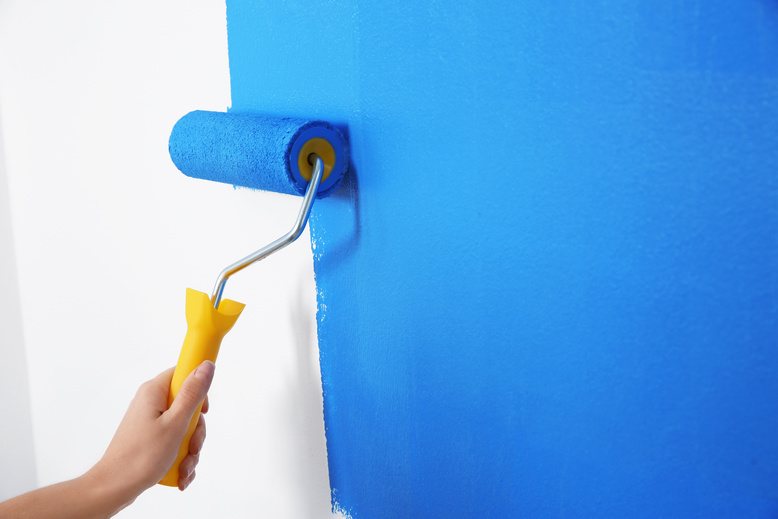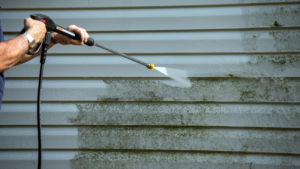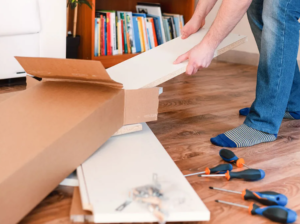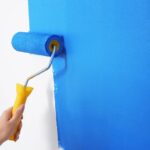
Painting a room or a house is a great way to make a room, hall, bathroom or even the whole house look new again. Now the painting is done, the extra paint (if any) is usually stored out in a garage or shed. There it is exposed to extreme temperature swings (summer / winter) as well as age. The paint ends up drying up or becomes a muck where it’s unrecognizable.
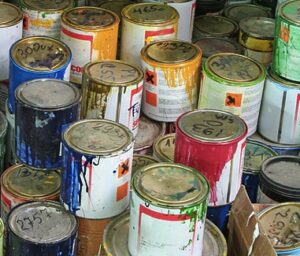
During spring cleaning, those old paint cans have been an eyesore, maybe for several years. So out they go!
Say about six months later, you decide to move some pictures or mirrors around. Maybe there are some crayon masterpieces on the wall, for some odd reason. Or maybe there is just some minor drywall repair. All you need is some touch up paint.
Now you have reached a homeowner dilemma:
- Can I get matching paint for the touchup, so it doesn’t look like a “touchup?”
- Or do I have to repaint the whole room?$$? (or worse, the whole house!)
This is an anxiety of most every home owner, especially if you spent the extra money for top quality paint! Luckily, paint companies of today, can reproduce the color if you have the code. However, you don’t have the codes due to Spring cleaning!
Maybe if you can remember the actual name of the color. It was:
- Slate Gray?
- Slate Grey?
- Light Slate Gray?
- Misty Slate Gray?
- Light Misty Slate Gray?
- Smokey Gray?
- Light Smokey Gray?
- Light Smokey Misty Gray?
- Some kind of Light Gray!
This is now guess work. Will it match or will it not?
To prevent this, I’ve always (tried) to create a spreadsheet (or document), with as much detail about the paint:
- Room (living room, hall, bathroom, baby room, etc.)
- Brand (Behr, Sherwin Williams, Glidden, etc.)
- Description (paint & primer, Marquee, Dynasty, manufacturer product line, etc. )
- Finish (flat, egg shell, semi gloss, etc.)
- Product Number (of the base paint)
- Color Code Number / ID (this is the color ID of the color you chose)
- Store (which store you bought it from)
- Date
I’ve even taken a photo of the label and container and filed that away where I keep my spreadsheet.
Now with this information, you’re much more likely to get a “close as possible” to an exact match. I say close to possible, as touching up paint that has been exposed to the elements is difficult to be an absolute exact match. The goal is to get it so close that the naked eye won’t see it.
Though that’s the best and most organized way, it is not always necessarily the BEST method, specifically when it comes to paint that has been “weathered.” The technology does exist where you can take a paint sample (say cut from an inconspicuous space or a place that can easily be patched) that can be scanned and matched as close as possible. Honestly speaking, I’m zero for ten (0 out of 10) with this method when the paint has been on the wall or structure for less than two to three years (depends on location and exposure to elements). If the paint has been weathered, then the computer can MAYBE compensate for that. It does work when you don’t have an option except for an entire paint job if you don’t mind the slight mismatch. I wouldn’t say this is the LAST resort, as I’ve done this when the paint is a bit faded or weathered. I usually use this method:
- Paint exposure (already painted) is LESS than three (3) years and not exposed to elements (sun, wind, rain, etc.): I buy the exact paint sample or small quantity using the exact code.
- Paint exposure (already painted) is MORE than three (3) years or exposed to elements (sun, wind, rain, etc.), or I don’t have the code: I buy the exact paint sample or small quantity using a computer scan match. This avoids a mis-match because of the weathering. The computer can adjust the color difference so it doesn’t look like “new” color on top to “weathered” color.
Paint mismatch will happen, so do not be surprise if you were not prepared for it.
As far as taking a photo with your phone and getting a match … I would HONESTLY love to hear your experience.
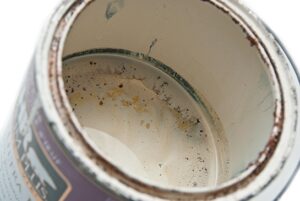
This will absolutely save you money. You should now be able to just buy a small container of paint for those touch ups. Most of the time, I just purchase one of the “paint samples” and have them color color match that. Great for painting touch ups!
Ahh, speaking of that “old” paint …. If it’s over a year old, I throw it out. No use in keeping that around now for any extended period. It’s not going to be any good, anyway.
In Summary
Painting your house, room or project gives it a fresh look, but leftover paint stored in the garage or shed can become unusable due to extreme temperatures. During spring cleaning, old paint cans are often thrown out, leading to a dilemma when you need touch-up paint later. Matching paint for touch-ups can be challenging without the original codes or color names. To avoid this issue, keep detailed records of the paint used for each room, including the brand, finish, color code, and store. This information helps get as close a match as possible when you need more paint. For touch-ups, buying a small paint sample is usually sufficient. Toss out old paint after a year as it won’t be good anymore.

